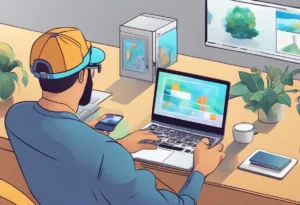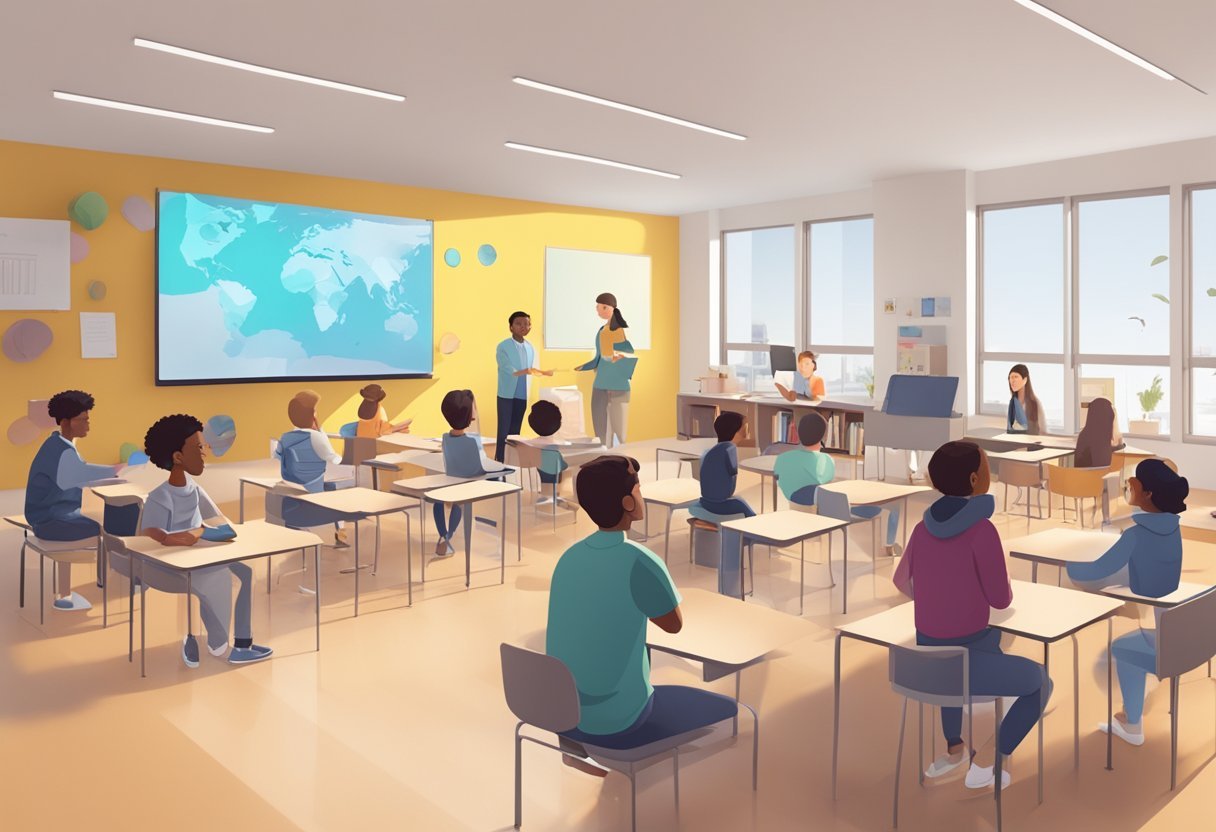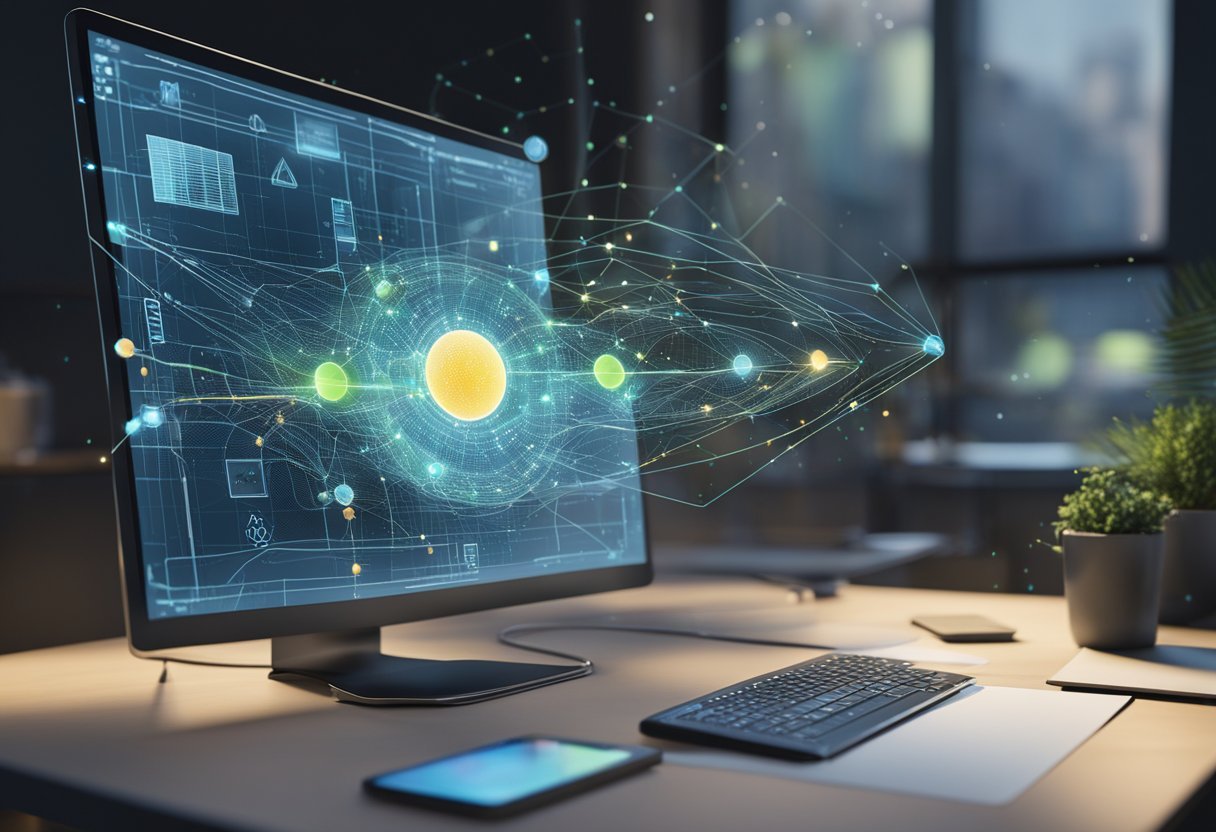Augmented reality (AR) has been making waves in the tech industry for years, and its applications continue to expand. One area where AR has made significant strides is in the field of optics, specifically in the development of augmented reality scopes. These scopes combine traditional aiming capabilities with advanced technology to enhance accuracy, decision-making, and overall shooting experience. In this bllog post, you will learn about augmented reality scope and how AR technology is being used in different sectors
Augmented reality scopes are essentially high-tech devices that allow shooters to see computer-generated images superimposed over the real-world environment. These images can provide a wealth of information, including range, wind direction, and even the location of other shooters in the area.
Understanding Augmented Reality
Augmented reality (AR) is a technology that allows users to see digital information overlaid on the real world. It enhances the user’s perception of reality by adding computer-generated elements that interact with the environment. AR is a rapidly growing field that has a wide range of applications in various industries, including entertainment, education, healthcare, and manufacturing.
History and Evolution
The concept of augmented reality can be traced back to the 1960s when Ivan Sutherland developed the first head-mounted display (HMD) system. However, it was not until the 1990s that the term “augmented reality” was coined. Since then, the technology has evolved significantly, and today’s AR systems are much more advanced and sophisticated.
AR vs. VR vs. MR
Augmented reality is often confused with virtual reality (VR) and mixed reality (MR). While all three technologies involve computer-generated elements, they differ in the way they interact with the real world. VR is a fully immersive experience that transports the user to a completely virtual environment. MR, on the other hand, combines elements of both AR and VR to create a hybrid experience that blends the real and virtual worlds.
Augmented reality scope
The scope of augmented reality is vast, and it has the potential to revolutionize many industries. In entertainment, AR can be used to create immersive gaming experiences that blend the real and virtual worlds. In education, it can be used to enhance learning by providing interactive and engaging content. In healthcare, AR can be used to assist surgeons during complex procedures and to help patients visualize their conditions.
Augmented reality is a rapidly evolving technology that has the potential to transform the way we interact with the world around us. As the technology continues to advance, we can expect to see even more innovative and exciting applications of AR in the future.
AR Technological Foundations

Devices and Platforms
Augmented Reality (AR) is a technology that overlays digital information onto the real world, providing users with a more immersive experience. AR can be experienced through various devices and platforms, including smartphones, AR glasses, headsets, and more.
Smartphones are the most common devices used to experience AR, as they are widely available and accessible. AR apps can be downloaded onto smartphones, which then use the device’s camera and other sensors to overlay digital information onto the real world.
AR glasses and headsets are also gaining popularity in the market. These devices provide a more immersive experience as they allow users to view digital information hands-free. AR glasses and headsets are equipped with sensors such as LIDAR, which helps in object recognition and tracking.
Computer Vision and Object Recognition
Computer vision and object recognition are the foundations of AR technology. Computer vision is the ability of a computer system to interpret and understand visual data from the real world. Object recognition is the ability to identify and track objects in the real world.
AR uses computer vision and object recognition to overlay digital information onto the real world. The technology uses cameras and sensors to capture visual data from the real world, which is then processed by the computer system to identify and track objects.
LIDAR is a sensor that is commonly used in AR glasses and headsets for object recognition and tracking. It uses laser light to measure the distance between objects, allowing the system to create a 3D map of the real world.
AR technology is built on the foundations of computer vision and object recognition. Devices and platforms such as smartphones, AR glasses, and headsets are used to experience AR. LIDAR is a commonly used sensor for object recognition and tracking in AR glasses and headsets.
AR in Different Sectors

Augmented Reality (AR) has become a game-changer in various sectors, from healthcare to entertainment. The technology has gained significant traction and has brought a wave of transformation in different fields. Here are some of the sectors where AR has made an impact.
Healthcare and Medicine
AR has proven to be an indispensable tool in the healthcare field, providing surgeons with invaluable support during complex surgeries. Surgeons can use AR technology to visualize the patient’s anatomy in real-time, which helps them make accurate incisions and avoid damaging sensitive tissues. AR also helps in training medical students and residents by providing them with a virtual environment to practice surgeries.
Education and Training
AR has transformed the way education and training are delivered. Teachers can use AR to create interactive learning experiences that engage students and help them understand complex concepts. AR also provides students with a virtual environment to practice skills and gain hands-on experience.
Retail and Commerce
AR is revolutionizing the retail industry by providing customers with an immersive shopping experience. Retailers can use AR to create virtual showrooms that allow customers to visualize products in their homes before making a purchase. AR also helps retailers to provide personalized recommendations to customers based on their preferences and purchase history.
Entertainment and Gaming
AR has been a game-changer in the entertainment and gaming industry. AR games like Pokemon Go and Ingress have become a massive hit, providing users with an immersive gaming experience. AR also provides filmmakers with the ability to create interactive movies that allow viewers to explore different storylines and endings.
AR has a vast scope in various sectors, from healthcare to entertainment. The technology has brought a wave of transformation and has become a game-changer in different fields.
Content Creation and Interaction in AR

Developing AR Content
Creating engaging and interactive AR content is crucial for businesses looking to stay ahead in the digital age. The process of developing AR content involves creating a digital overlay on top of the real world. This can be done through the use of specialized software tools that allow designers to create 3D models, animations, and other digital content that can be integrated into the real world.
To create high-quality AR content, it is important to ensure that all the elements of the experience contribute toward a high-quality impression of the brand and what is being sold. This includes using clear and concise language, appealing visuals, and appropriate interactive elements. Interactive elements get the audience involved with the AR content and make it more engaging, giving customers a sense of urgency and control.
User Engagement and Experience
User engagement and experience are critical components of creating successful AR content. AR offers a unique opportunity to create an interactive experience that is both immersive and engaging. To create a successful AR experience, it is important to focus on the user’s experience and engagement.
AR content should be relevant, meaningful, and engaging for the users. The content should be designed to provide users with a sense of urgency and control. This can be achieved by using interactive elements and providing users with the ability to explore and interact with the AR content. The overall goal is to create an experience that is both fun and informative, while also promoting the brand or product.
Developing engaging AR content and providing users with an interactive experience is critical for businesses looking to stay ahead in the digital age. By focusing on the user’s experience and engagement, businesses can create high-quality AR content that is both informative and entertaining.
Business and Marketing Applications
Advertising with AR
Augmented Reality (AR) has become an effective tool for businesses to advertise their products and services. AR advertising provides an interactive and immersive experience for the consumers, making it easier for businesses to engage with their target audience. AR ads can be created for various platforms, including social media, mobile apps, and websites.
AR advertising can be used to showcase products and services in a more engaging and interactive way. For instance, a furniture company can use AR to allow customers to see how a piece of furniture would look in their home before making a purchase. AR can also be used to create interactive product demos, offering customers a more immersive experience.
Market Trends and Consumer Behavior
AR technology has the potential to transform the way businesses understand and engage with their customers. By using AR analytics, businesses can gain insights into consumer behavior, preferences, and trends. AR can be used to track how customers interact with products and services, providing businesses with valuable data on consumer behavior. This information can be used to improve products and services, as well as to create targeted marketing campaigns.
AR can also be used to create personalized experiences for customers. By using AR, businesses can offer customers a more customized experience, which can lead to increased customer satisfaction and loyalty.
AR technology has significant potential for businesses to improve their marketing and advertising efforts. By leveraging AR technology, businesses can create more engaging and personalized experiences for their customers, leading to increased customer satisfaction and loyalty.
Challenges and Best Practices

Technical Challenges
Augmented Reality (AR) is a rapidly evolving technology that has the potential to revolutionize the way businesses operate. However, there are several technical challenges that designers and developers must overcome to create effective AR applications. Some of the most significant technical challenges include:
- Hardware Fragmentation: AR applications need to be designed to work on a wide range of devices, from smartphones to specialized headsets. This can be a significant challenge due to the fragmented nature of the AR hardware market.
- Performance: AR applications require significant computational power to render 3D objects in real-time. This can be a challenge on mobile devices, which have limited processing power and battery life.
- Tracking: AR applications rely on accurate tracking of the user’s position and orientation in the real world. This can be a challenge in environments with poor lighting or complex geometry.
To overcome these technical challenges, designers and developers must adopt best practices such as:
- Optimization: AR applications must be optimized for performance on a wide range of devices. This requires careful consideration of the hardware capabilities and limitations of each device.
- Testing: AR applications must be thoroughly tested in a variety of real-world environments to ensure that they function correctly in all conditions.
- Innovation: AR designers and developers must be constantly pushing the boundaries of what is possible with the technology. This requires a willingness to experiment with new approaches and techniques.
Adopting AR in Business
Adopting AR technology in business can be challenging due to the lack of standards and best practices in the industry. However, there are several best practices that businesses can follow to ensure a successful adoption of AR technology:
- Efficiency: AR applications should be designed to improve efficiency and productivity in the workplace. This requires a careful analysis of the specific business processes that can be improved with AR technology.
- Adaptability: AR applications should be designed to be adaptable to a wide range of business environments. This requires a flexible approach to application design and development.
- Testing: AR applications should be thoroughly tested in real-world business environments to ensure that they function correctly and provide value to the organization.
The Future of Augmented Reality
Augmented Reality (AR) is already revolutionizing the way we interact with the world around us. With the emergence of new AR technologies, the scope of AR is expected to grow significantly in the coming years. In this section, we will explore the emerging AR technologies and the role of AR in the Metaverse.
Emerging AR Technologies
Apple, Google, and Microsoft are among the leading companies investing in AR technology. Apple’s ARKit, Google’s ARCore, and Microsoft’s HoloLens are some of the popular AR technologies that are already making an impact.
AR technology is not only limited to smartphones and head-mounted displays. It is also making its way into other industries such as healthcare, education, and retail. For instance, AR is being used in medical training to simulate surgeries and in retail to provide customers with an immersive shopping experience.
The Role of AR in the Metaverse
The Metaverse is a term used to describe a virtual shared space that is created by the convergence of physical and virtual reality. AR is expected to play a significant role in the Metaverse by providing users with an immersive experience that blurs the lines between the real and virtual worlds.
Innovation in Extended Reality (XR) is already underway, and it’s easy to envision a future in which the lines between the real world and the virtual world are completely blurred. AR technology is expected to be a major player in this revolution, providing users with a seamless experience that combines the best of both worlds.
The future of AR is bright, and the scope of AR is expected to grow significantly in the coming years. With the emergence of new AR technologies and the role of AR in the Metaverse, AR is poised to become a ubiquitous technology that is used in every aspect of our lives.
Frequently Asked Questions

How is augmented reality integrated into display technologies?
Augmented reality is integrated into display technologies through the use of specialized software and hardware. The software is used to create the augmented reality experience, while the hardware is used to display the experience to the user. This integration can be achieved through the use of cameras, sensors, and other specialized equipment that capture the real world and overlay it with digital content.
What are the career opportunities in the augmented reality industry?
The augmented reality industry offers a wide range of career opportunities, including software development, design, project management, and marketing. As the industry continues to grow, new job roles are being created, and existing roles are evolving to meet the changing needs of the industry.
What is the pricing model for augmented reality solutions like Scope AR’s WorkLink?
The pricing model for augmented reality solutions varies depending on the specific solution and provider. Scope AR’s WorkLink, for example, offers a subscription-based pricing model that is based on the number of users and the features required. Other providers may offer different pricing models, such as per-project pricing or usage-based pricing.
What are the core features of augmented reality platforms?
The core features of augmented reality platforms include the ability to create and manage digital content, the ability to integrate with other systems and devices, and the ability to track and analyze user behavior. Other features may include support for multiple devices and platforms, real-time collaboration, and advanced analytics and reporting.
How does augmented reality enhance the user experience on screens?
Augmented reality enhances the user experience on screens by overlaying digital content onto the real world, creating a more immersive and interactive experience. This can include anything from simple animations to complex 3D models and interactive games. By enhancing the user experience, augmented reality can help to increase engagement, improve learning outcomes, and drive business results.
What are the projections for AR and VR growth in the coming years?
The projections for AR and VR growth in the coming years are very positive, with many experts predicting significant growth in both industries. According to a report by Grand View Research, the global augmented reality market is expected to grow at a compound annual growth rate of 39.8% from 2023 to 2030. Similarly, the global virtual reality market is expected to reach $62.1 billion by 2027, according to a report by Fortune Business Insights.




